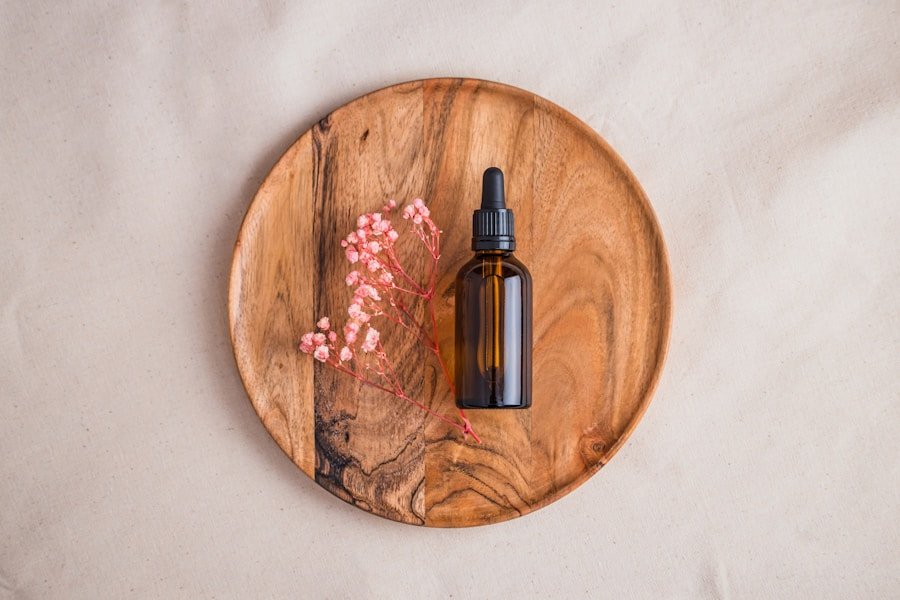When it comes to choosing the best bottle brush for your cleaning needs, it’s important to understand the different types available on the market. There are several types of bottle brushes, each designed for specific cleaning tasks. The most common types include traditional bottle brushes, silicone bottle brushes, and sponge bottle brushes.
Traditional bottle brushes are typically made with a long handle and bristles at the end. These are ideal for cleaning narrow-necked bottles, such as baby bottles, wine bottles, and reusable water bottles. Silicone bottle brushes, on the other hand, are made with flexible silicone bristles that are gentle yet effective at scrubbing away dirt and grime. These are great for cleaning delicate glassware and other sensitive surfaces. Sponge bottle brushes feature a sponge tip instead of bristles, making them perfect for cleaning bottles with wider openings, such as sports bottles and travel mugs.
When choosing a bottle brush, it’s important to consider the type of bottles you’ll be cleaning most frequently. If you have a variety of bottle shapes and sizes, it may be beneficial to invest in a set of different types of bottle brushes to ensure you have the right tool for every cleaning task.
Key Takeaways
- Consider the size and shape of the bottle brush to ensure it fits your cleaning needs
- Evaluate the different bristle options to choose the best material for your cleaning tasks
- Look for special features such as flexible handles or interchangeable heads to make cleaning easier
- Clean and maintain your bottle brush regularly to ensure its longevity and effectiveness
- Choose a bottle brush specifically designed for your cleaning needs, such as narrow neck bottles or baby bottles
Factors to Consider When Choosing a Bottle Brush
There are several factors to consider when choosing a bottle brush, including the size and shape of the brush, the material of the bristles, and any special features that may be beneficial for your specific cleaning needs. It’s important to take these factors into account to ensure you choose a bottle brush that will effectively clean your bottles without causing damage.
One of the most important factors to consider is the size and shape of the bottle brush. The size and shape of the brush should be compatible with the bottles you’ll be cleaning. If you have a variety of bottle sizes and shapes, it may be beneficial to choose a bottle brush with a flexible or adjustable head to accommodate different bottle openings.
Another important factor to consider is the material of the bristles. Bottle brushes are available with bristles made from a variety of materials, including nylon, silicone, and natural fibers. Nylon bristles are durable and effective at scrubbing away tough stains, while silicone bristles are gentle yet effective at cleaning delicate surfaces. Natural fiber bristles, such as horsehair or plant-based fibers, are eco-friendly and gentle on surfaces, making them a great choice for environmentally conscious consumers.
The Importance of Size and Shape in Bottle Brushes
When it comes to choosing the best bottle brush for your cleaning needs, size and shape are crucial factors to consider. The size and shape of the bottle brush will determine its effectiveness at cleaning different types of bottles and containers. It’s important to choose a bottle brush that is compatible with the bottles you’ll be cleaning to ensure thorough and efficient cleaning.
The size and shape of the bottle brush should be compatible with the openings of the bottles you’ll be cleaning. If you have a variety of bottle sizes and shapes, it may be beneficial to choose a bottle brush with a flexible or adjustable head to accommodate different bottle openings. This will ensure that you have the right tool for every cleaning task and can effectively clean all of your bottles without struggling to reach into narrow or awkwardly shaped openings.
In addition to compatibility with bottle openings, the size and shape of the bottle brush should also be comfortable to use. A bottle brush with an ergonomic handle and a comfortable grip will make cleaning easier and more efficient. It’s important to choose a bottle brush that feels comfortable in your hand and allows you to easily maneuver it inside bottles and containers.
Material Matters: Evaluating the Best Bristle Options
| Features | Benefits |
|---|---|
| Bristle Material | Durable and effective cleaning |
| Length and Width | Ability to reach deep and narrow spaces |
| Handle Design | Comfortable grip for easy handling |
| Flexibility | Ability to bend and flex for thorough cleaning |
| Compatibility | Suitable for different types of bottles and containers |
The material of the bristles is another important factor to consider when choosing a bottle brush. Bottle brushes are available with bristles made from a variety of materials, each with its own unique benefits and drawbacks. It’s important to evaluate the best bristle options based on your specific cleaning needs and preferences.
Nylon bristles are one of the most common options for bottle brushes. Nylon bristles are durable and effective at scrubbing away tough stains and residue. They are also resistant to moisture and can withstand frequent use without deteriorating. However, nylon bristles can be abrasive on delicate surfaces, so they may not be the best choice for cleaning sensitive glassware or other fragile items.
Silicone bristles are another popular option for bottle brushes. Silicone bristles are gentle yet effective at scrubbing away dirt and grime without scratching or damaging surfaces. They are also resistant to bacteria and mold growth, making them a hygienic choice for cleaning bottles and containers that come into contact with food or beverages. However, silicone bristles may not be as effective at removing tough stains as nylon bristles.
Natural fiber bristles, such as horsehair or plant-based fibers, are an eco-friendly option for environmentally conscious consumers. These bristles are gentle on surfaces and effectively remove dirt and grime without causing damage. However, natural fiber bristles may not be as durable as nylon or silicone bristles, so they may not be the best choice for heavy-duty cleaning tasks.
Special Features to Look for in a Bottle Brush
In addition to size, shape, and bristle material, there are several special features to look for in a bottle brush that can enhance its effectiveness and convenience. These special features can make cleaning easier and more efficient, saving you time and effort in your daily cleaning routine.
One important special feature to look for in a bottle brush is a built-in scraper or scrubber. A built-in scraper or scrubber can help remove stubborn stains and residue from bottles and containers without requiring additional tools or accessories. This can make cleaning more convenient and efficient, especially for tough cleaning tasks that require extra scrubbing power.
Another useful special feature to look for in a bottle brush is a flexible or adjustable head. A flexible or adjustable head can make it easier to clean bottles with narrow or awkwardly shaped openings by allowing you to maneuver the brush into tight spaces. This can ensure thorough and effective cleaning without struggling to reach into hard-to-reach areas.
Some bottle brushes also come with a detachable or extendable handle, which can be beneficial for cleaning tall or deep bottles and containers. A detachable or extendable handle allows you to adjust the length of the brush to reach into deep containers or narrow-necked bottles without straining or struggling. This can make cleaning more comfortable and efficient, especially for larger or hard-to-reach items.
How to Clean and Maintain Your Bottle Brush
Once you’ve chosen the best bottle brush for your cleaning needs, it’s important to know how to clean and maintain it to ensure its effectiveness and longevity. Proper cleaning and maintenance will help keep your bottle brush in good condition and prevent bacteria or mold growth that can compromise its hygiene.
To clean your bottle brush, start by rinsing it thoroughly under running water to remove any dirt, soap residue, or debris. You can also use a mild dish soap or vinegar solution to clean the bristles more thoroughly if needed. Gently scrub the bristles with your fingers or a soft brush to remove any stubborn stains or residue.
After cleaning the bristles, rinse the bottle brush again under running water to remove any soap residue or cleaning solution. Shake off any excess water and allow the brush to air dry completely before storing it away. It’s important to ensure that the brush is completely dry before storing it to prevent mold or bacteria growth.
In addition to regular cleaning, it’s important to inspect your bottle brush regularly for signs of wear or damage. Replace the brush if you notice frayed or damaged bristles, loose or broken parts, or any other signs of deterioration that may compromise its effectiveness.
Top Tips for Choosing the Best Bottle Brush for Specific Cleaning Needs
When choosing the best bottle brush for specific cleaning needs, there are several tips to keep in mind that can help you make an informed decision. These tips can help you choose a bottle brush that is tailored to your specific cleaning tasks and preferences, ensuring thorough and efficient cleaning results.
If you frequently clean baby bottles or other narrow-necked containers, look for a bottle brush with a long handle and narrow head that can easily reach into tight spaces. A flexible or adjustable head can also be beneficial for reaching into narrow openings without struggling.
For delicate glassware or sensitive surfaces, consider a silicone bottle brush with gentle yet effective silicone bristles that won’t scratch or damage surfaces. Silicone bristles are also resistant to bacteria growth, making them a hygienic choice for items that come into contact with food or beverages.
If you need a versatile bottle brush that can clean a variety of containers, consider investing in a set of different types of bottle brushes with various sizes, shapes, and bristle materials. This will ensure that you have the right tool for every cleaning task without compromising on effectiveness or convenience.
In conclusion, choosing the best bottle brush for your specific cleaning needs requires careful consideration of factors such as size, shape, bristle material, and special features. By understanding the different types of bottle brushes available on the market and evaluating these factors based on your specific preferences and tasks, you can choose a bottle brush that will effectively clean your bottles without causing damage or compromising hygiene. Proper cleaning and maintenance will help keep your bottle brush in good condition and ensure its longevity, allowing you to enjoy thorough and efficient cleaning results for years to come.
FAQs
What is a bottle brush?
A bottle brush is a cleaning tool designed to clean the inside of bottles, jars, and other narrow-necked containers. It typically consists of a long handle and a bristle brush at the end.
What are the different types of bottle brushes available?
There are various types of bottle brushes available, including silicone bottle brushes, nylon bottle brushes, and sponge bottle brushes. Each type has its own unique features and benefits.
How do I choose the best bottle brush for my cleaning needs?
When choosing a bottle brush, consider the size and shape of the bottles you need to clean, as well as the material of the brush and the type of bristles. Additionally, consider any specific cleaning needs, such as removing tough stains or reaching difficult-to-clean areas.
What are the key features to look for in a bottle brush?
Key features to look for in a bottle brush include a long and sturdy handle, durable bristles that can effectively clean without scratching, and a design that allows for easy maneuverability inside bottles and other containers.
How should I care for and clean my bottle brush?
To care for and clean your bottle brush, rinse it thoroughly after each use and allow it to air dry. Periodically, you can also wash the brush with soap and water or sanitize it with a cleaning solution to remove any built-up residue.





































